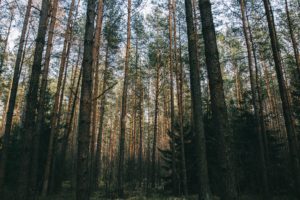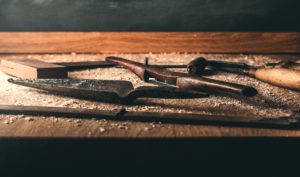Cabinetry is an umbrella term which incorporates the building of everything from your functional bedside table to an extravagant floor to ceiling display cabinet. There are many variables of cabinetry making which determine the quality and sustainability of the piece. 
At Lacaze we pride ourselves in hand crafting the highest quality furniture, to do this we take extra care in every aspect of the production from the timber itself to the joints we use to hold it all together used.
The first step to ensuring high quality is to use timber from FSC (Forest Stewardship Council) standard forests. The FSC runs a global forest certification and retail licensing system, which allows consumers to purchase products produced from well-managed forests ensuring our forests are alive and healthy for generations to come.

Lacaze purchase straight solid timber and veneered planks from and FSC a forest in Austria, which is steamed to remove any parasites and kiln-dried to remove moisture. Solid planks are wide, around 1220mm x 2400mm, and veneered planks are narrower and slightly longer at 200mm x 3000mm. Beech, oak and walnut are the most popular timbers used buy our clients, although we can source and produce cabinetry in almost any desired timber. Pieces made with veneer are also more popular simply because they have the same beautiful look as solid pieces however they are considerable lighter, making them much more practice.
Another important decision to make when designing cabinetry is the grain of the timber. The way the veneer is cut leads grains appearing differently.
- Crown Cut. This is achieved then the log is cut in half, and the half log or is sliced straight across, parallel to a line through the centre of the log producing a flower grain.
- Quarter Cut. As the name suggests the log is cut in quarters, and each quarter is sliced perpendicular to the growth rings of the tree producing a veneer with a relatively uniform linear vertical grain.
- Birds Eye. Birds eye is a distinctive pattern on the wood which from a distance looks like a blur but upon closer inspection is actually made up of random tiny swirling eyes in the grain of wood and is most commonly found in Maple and is highly sought after. There are different theories as to why this pattern occurs however none has ever been proven. The most popular theories are of birds packing the bark or of a fungus causing imperfections. The veneer is achieved by slicing the wood vertically in half and then sheets can be sliced from there.
- Figured. Finally, joints greatly affect the overall quality of a piece as they hold it all together. There are many different types of joints and they all differ in strength and appearance.

Miter. The standard joint used is the miter joint this is made between two pieces of wood with ends cut at an angle of 45°, and a dowel is used in between.
Butt. The weakest and least attractive type of joint is the Butt joint this is simply made by attaching one piece of wood to another at 90°. This is a weaker joint than the miter joint because the surface area to attach the wood together is smaller
Dovetail. The dovetail is the strongest of all joints and its name suggests the joint consists of pins that look like dovetails which interlock into corresponding slots. Despite it being the strongest the dovetail may not be used because it is a very labor intensive and challenging joint to construct and doesn’t always have the desired appearance as it can look more traditional than the miter joint
At Lacaze we take extra care with our joints and glue, dowel and screw every single one. Therefore, we feel confident enough have a 15-year guarantee on everything we produce.
